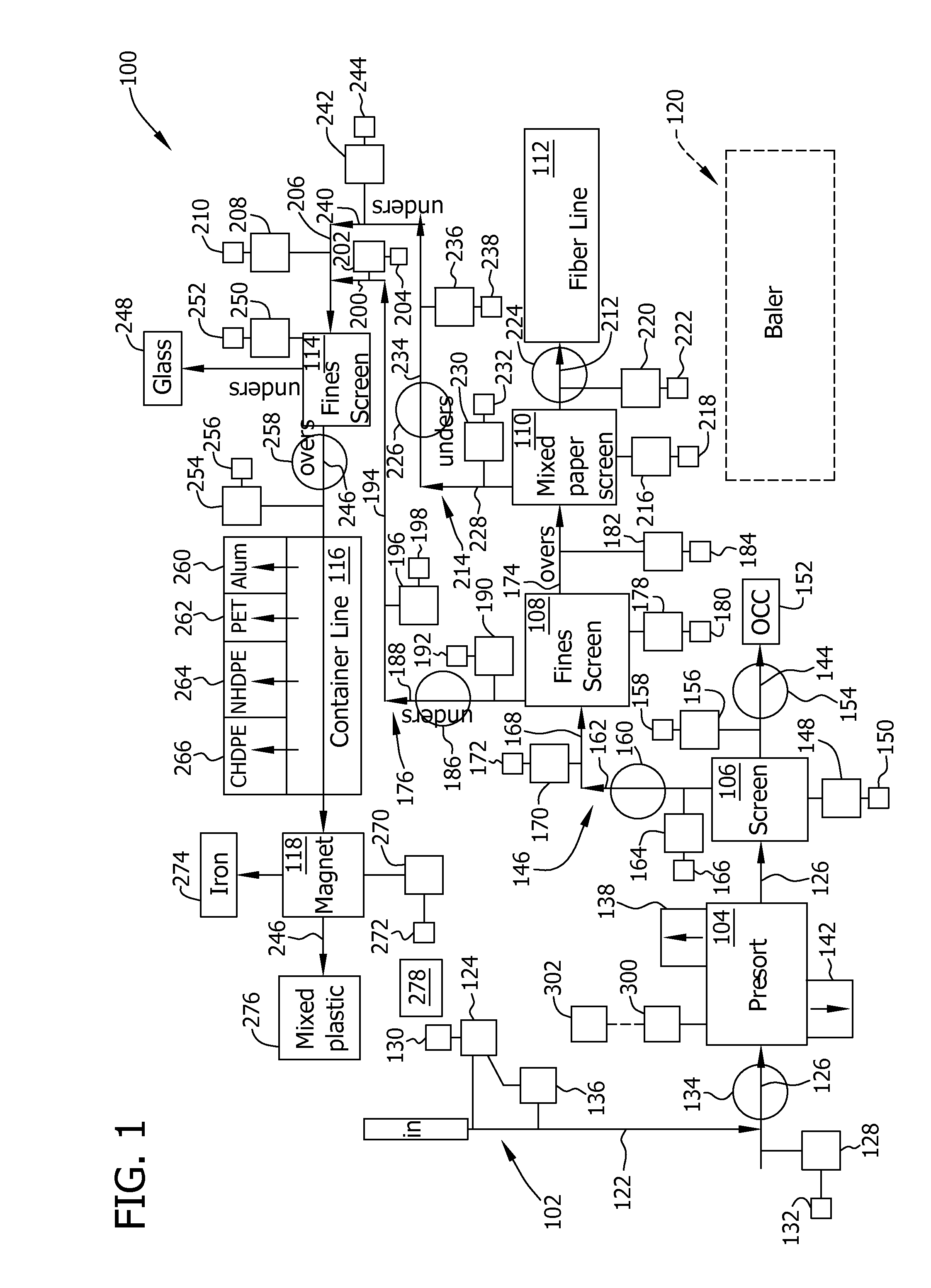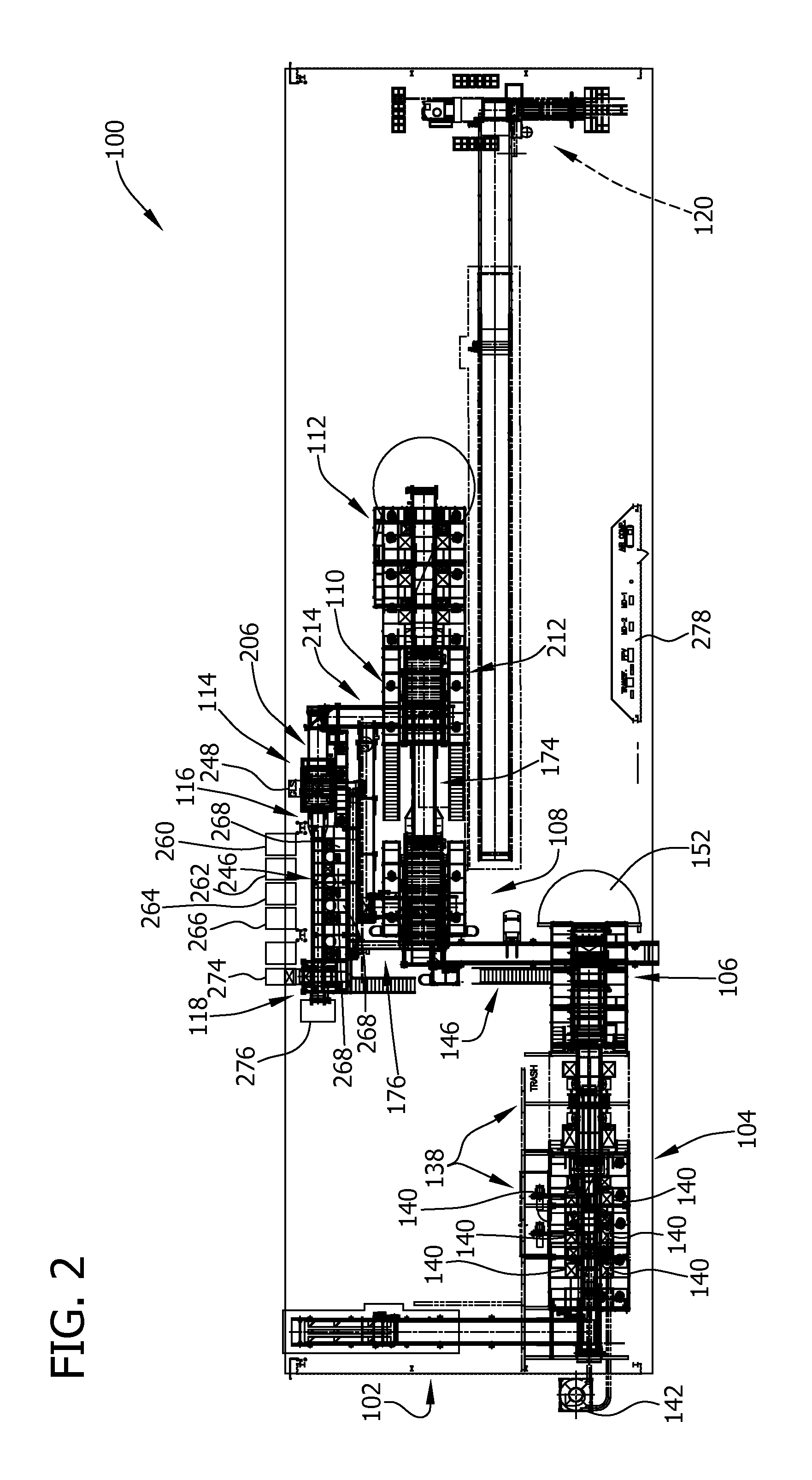Objectively evaluating the performance of any given sorting system, however, including but not limited to, sorting system 100 (shown in FIGS. 1 and 2), is a difficult task.
A number of difficult issues have so far have impeded a reliable and accurate evaluation of sorting system production and performance in any particular installation.
For example, the sorting systems can be very large, quite complex, and rather expensive.
For a variety of reasons, it is often difficult to assess, however, whether any given sorting system is actually operating in an optimal manner.
If the estimated characterization is not substantially close to an actual characterization of the product stream, then the
recovery on that product stream may be adversely affected.
Further, if the characterization of the stream is not substantially recovered by the sort system it can adversely affect the
sustainability model needed to process like streams.
Further, a number of potential equipment failure conditions, error conditions, and / or maintenance issues may present themselves with such complicated machinery.
Such conditions may result in so-called
downtime conditions wherein a sorting system may not sort a product stream into single commodities unless appropriate maintenance procedures are completed or unless error conditions or equipment failures are rectified.
In some instances, system-related downtime conditions can represent a substantial portion of otherwise available production time.
Of course, one goal of operating the sorting system is to minimize downtime and maximize runtime with a high level of sorting accuracy, but because of the various causes of downtime that are both
machine-related and human-related, it can be difficult to evaluate whether or how downtime conditions can be decreased.
In particular, discerning the limitations of a sorting system from the limitations of its operators can be especially difficult.
While the operators tend to be skilled workers, and much effort is made to properly
train them, the operational results of sorting systems may vary widely amongst human teams tasked with operating them.
Consistently identifying and using the optimal system settings can be difficult, and sometimes is a
trial and error process where the implications of certain system settings and
modes to overall
machine performance is poorly understood, if it is understood at all.
Simply put, a sorting system being run at sub-optimal settings will not produce optimal outputs, but is often not apparent when sub-optimal system settings are being used.
Consequently, it can therefore be difficult to assess whether there is room for improvement in runtime performance of the sorting system.
Still further, many different types of refuse materials may be sorted using such sorting systems, and sorting systems are available in various sizes and configurations, with various numbers of screens and other sorting machines, making it difficult to compare the performance of different sorting systems to one another.
This can be particularly problematic from a strategic planning perspective in which facility managers are trying to decide, for example, what types of equipment to purchase to complement existing equipment or whether existing equipment should be replaced.
For at least these reasons, efficient and optimal operation of sorting systems is difficult to objectively assess, and more difficult to achieve.
Such problems are compounded when trying to evaluate a number of different sorting systems in different facilities.
The management challenges in tracking and evaluation performance of the sorting systems in such circumstances are simply enormous.
For at least the reasons set forth above, however, assessing the performance of individual sorting systems, let alone the collection of sorting systems, is elusive.
However, when the optimal characterization is not met, either from mis-
estimation and / or sorting system under-performance, the full estimated
recovery from the product stream will not be realized.
 Login to View More
Login to View More  Login to View More
Login to View More 









